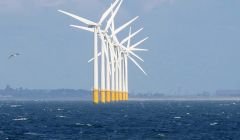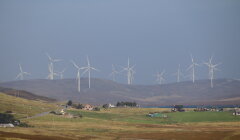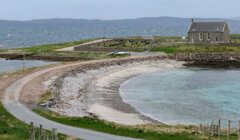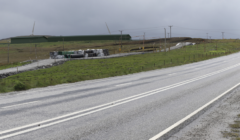News / Consultation launched on island wind projects
A CONSULTATION has been launched by the UK Government on proposals to allow remote island wind projects to bid for subsidies against “less established” technologies like offshore wind and wave.
The government intends to give remote island wind projects a legal definition and enable them to compete against ‘pot two’ technologies in the next Contracts for Difference (CfD) auction in spring 2019 to reflect that they have higher costs due to location and transmission requirements.
This would mean that remote island wind projects would not go up against mainland onshore wind projects in bidding for future CfD awards – which they would not likely be competitive in – and would have a separate administrative strike price.
Prospective windfarm developers Viking Energy Shetland welcomed the consultation and said it is “vital” that the isles’ renewable energy projects are supported.
It follows a previous consultation held last year which on whether to classify non-mainland onshore wind projects as a separate technology, with around two thirds of respondents thinking it should be treated differently.
A total of £556 million is due to be available in the next competitive allocation round for less established technologies.
The government’s consultation papers note that if remote island wind projects are “successful in an allocation round, it should, in turn, facilitate the construction of new transmission links, which could deliver a range of wider and longer term benefits and cost savings to the renewables industry and to the island economies”.
The long-mooted 103-turbine Viking Energy wind farm needs a large scale interconnector cable to the UK mainland to export its energy, suggested to be 600MW, and being awarded a CfD would give it greater economic leverage to go ahead.
Peel Energy’s 17-turbine wind farm in Yell also needs an interconnector link, while there is also a proposed 63-turbine development at the north of the island which is seeking consent from the Scottish Government.
Become a member of Shetland News
The UK Government proposes to amend Contracts for Difference (Allocation) Regulations 2014 to define a ‘remote island’ as being an island located in the territorial sea of the United Kingdom where all parts of its coastline are situated at least ten kilometres from mainland Great Britain.
To meet the CfD remote island criteria, a wind project would need to be linked up by an interconnector cable at least 50km in length, and upon completion it must be connected to the national transmission system for Great Britain or the distribution system.
Shetland, Orkney and islands on the west coast of Scotland would all be eligible under the definition and a report previously suggested they could provide around three per cent of the UK’s energy needs.
The government’s consultation also notes that wind developers must “continue working in partnership with communities to develop a sustainable community benefit package tailored to local circumstances”.
Hopes for a large interconnector were recently given another boost after energy regulator Ofgem rejected proposals to replace Lerwick Power Station with a 60MW subsea cable to the Scottish mainland in light of potential for renewable developments going ahead.
Priest said: “It remains vital for Shetland’s economic future that we’re allowed the chance to diversify and develop a renewable energy industry.
“Shetland has a proven world-class wind, wave and tidal energy resource and the Shetland community should get to use it to generate vital new jobs and income.
“This is the next tangible step from the government in implementing its decision to allow island projects to participate in the next CfD round. Engagement on the detail remains ongoing.”
UK government minister for Scotland Lord Duncan said all interested parties should have their say in the consultation.
“Wind projects in the remote islands of Scotland have the potential to generate substantial amounts of electricity and cut emissions, supporting economic growth and delivering lasting benefits for communities,” he said.
“Enabling these projects to compete in future auctions will reinforce the UK’s position as a world leader in renewable generation, as well as providing Scottish jobs in any projects supported.
“I urge local communities, developers and other stakeholders to work together to ensure that such projects deliver lasting benefits to the islands.”
The UK government’s consultation can be accessed here and it is open until 9 March.
Northern Isles MP Alistair Carmichael, meanwhile, recently called on the UK Government to do more to support marine renewable projects, such as wave and tidal developments.
He raised the issue at the House of Commons where he was given an assurance that the government is looking into suggestions for innovation and power purchase agreements.
“The Northern Isles are at the forefront of wave and tidal technology development, and with government support this can go even further,” Carmichael said.
“We need to act now to ensure that we do not repeat the mistakes of the past when we have done the difficult research and development but then failed to invest to make it a commercial product.”
Become a member of Shetland News
Shetland News is asking its readers to consider paying for membership to get additional perks:
- Removal of third-party ads;
- Bookmark posts to read later;
- Exclusive curated weekly newsletter;
- Hide membership messages;
- Comments open for discussion.
If you appreciate what we do and feel strongly about impartial local journalism, then please become a member of Shetland News by either making a single payment, or setting up a monthly, quarterly or yearly subscription.















































































